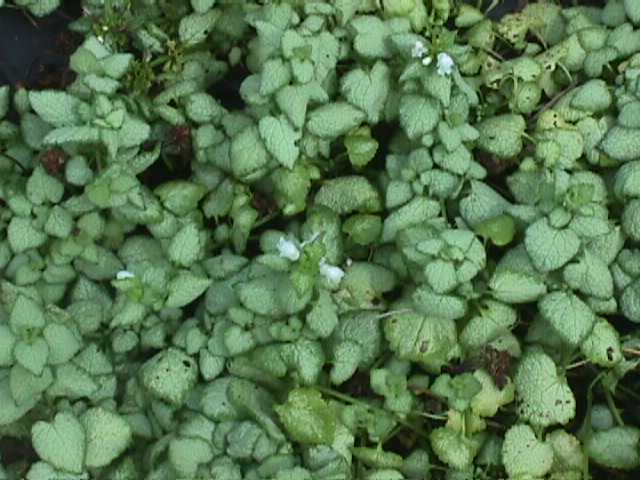| Botanical Name: Lamium maculatum | |
| Common Name: Dead Nettle |

-
Anatomy
-
Culture
-
Design
Plant Type
Ground cover, Perennial
Height Range
Under 1'
Flower Color
Lavender, Pink, Violet, White
Flower Season
Spring, Summer
Leaf Color
Bronze, Gold, Green, Yellow Green, Grey, Silver, White, Yellow, Variegated
Bark Color
n/a
Fruit Color
n/a
Fruit Season
n/a
Sun
Half, Shade
Water
Low, Medium
Growth Rate
Moderate
Soil Type
Clay, Loam
Soil Condition
Average, Rich, Well-drained, Dry
Soil pH
Neutral, Basic
Adverse Factors
Invasive
Design Styles
English Cottage, Formal, Japanese, Mediterranean, Ranch, Woodland
Accenting Features
Unusual Foliage
Seasonal Interest
Spring, Summer
Location Uses
Entry, Shrub Border, Foundation, Parking Strip, Patio, Raised Planter, Walkways
Special Uses
Cascade, Container, Filler, Small Spaces, Hanging Baskets
Attracts Wildlife
n/a
Information by: Stephanie Duer
Photographer:
Photographer:
-
Description
-
Notes
Spotted dead nettle is a moderate to fast growing, herbaceous perennial that forms a low, dense ground cover, usually under 6 inches, with a spread of 18 inches or more. Foliage color is silver-white with green margins, though many cultivars exist, with a seemingly infinite variety in leave color. Flower color is white, pink, rose, or lilac, depending on cultivar. Blooms typically appear late spring to early summer. Use as a ground cover in shrub or foundation borders, under trees, in containers or hanging baskets (though in this later use plants may not over winter).
Grow in well drained soil in part to full shade. It is tolerant of most soil types, but grows best in a loamy-clay to loamy-sandy soil. If planting as a groundcover, space the plants on 12-inch centers. It spreads by rhizones and creeping stems, so plant it knowing its nature, and it will be a heavenly addition to the garden. Restricting watering will keep it in check. Barney Barnett (Willard Bay Gardens) says lamium will keep snails out of hosta (they dislike its nettlely nature). In containers, it may need more frequent watering.